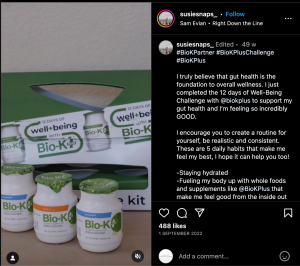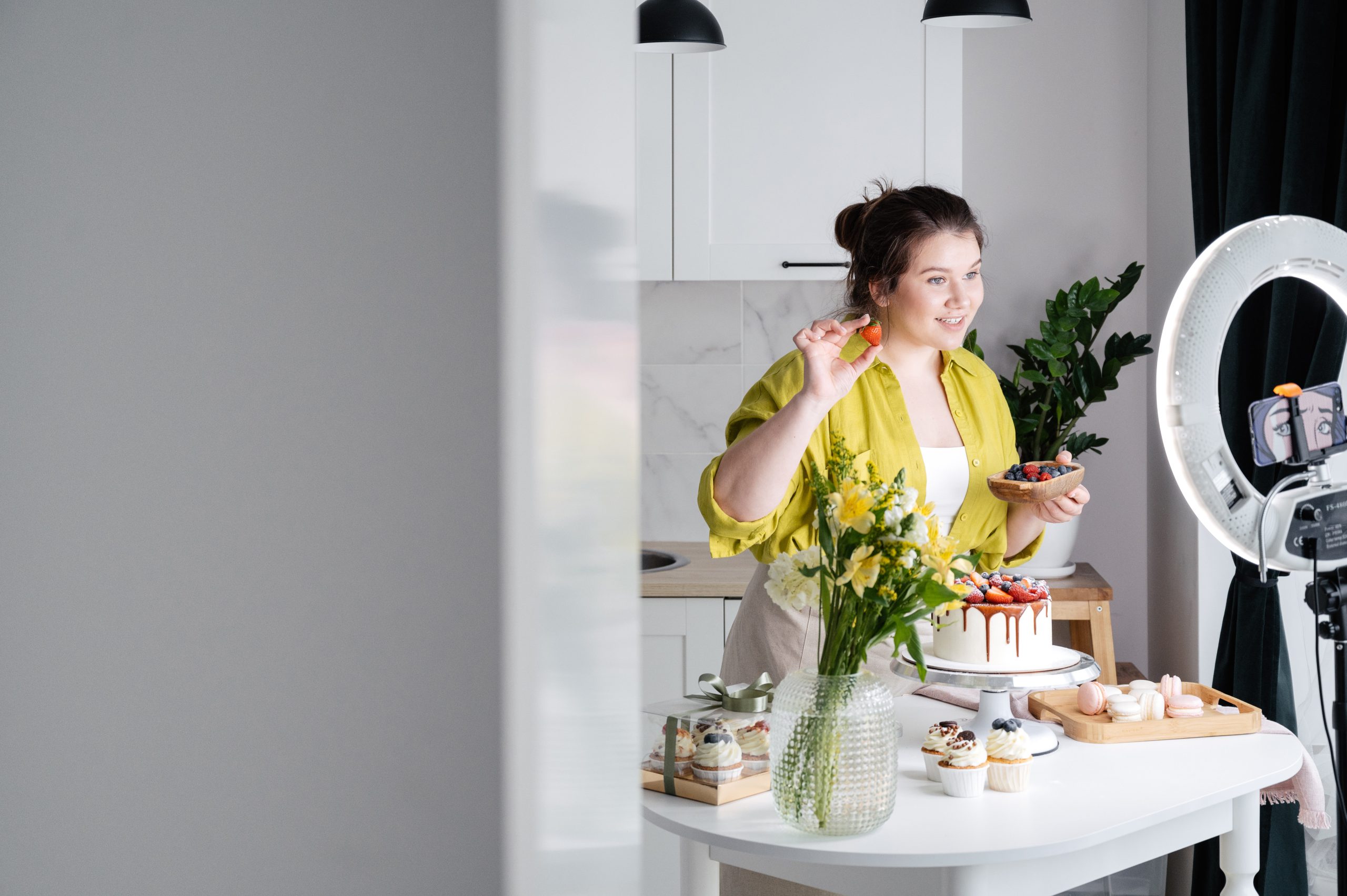Small packages, big impact – it’s a saying that holds true, even in the realm of micro-influencer marketing. While these phrases might be clichés, they’re spot on when it comes to the world of influencers. Incorporating micro-influencers into your marketing strategy can yield substantial benefits for your social media goals.
Chances are, you’ve already come across the buzz about influencer marketing. It’s a trend that’s dominating headlines and taking over Instagram feeds worldwide. In fact, the influencer marketing industry is estimated to be worth a staggering $10 billion.
Influencer marketing carries immense potential, fueling your brand’s visibility as consumers discover products to buy, places to dine, and even travel destinations through the eyes of influencers.
Today, brands have an unprecedented array of potential partners to choose from. When it comes to selecting an influencer, it’s crucial to recognise that size isn’t always the ultimate measure of success. Micro-influencers are a hidden gem that can set brands apart from their competitors.
In this article, we’ll outline what exactly a micro-influencer is, their benefits compared to larger influencers and other types of social media marketing, and how to select the right micro-influencer for your brand.
What is a micro-influencer?
In a nutshell, a micro-influencer stands shoulder to shoulder with regular influencers but operates on a more modest scale.
Much like their larger counterparts, micro-influencers collaboratively promote products, services, or brands to their audience in exchange for compensation or trade. Typically, micro-influencers boast follower counts ranging from 10,000 to 50,000.
On the whole, influencers are usually categorised based on follower count. This encompasses four primary types:
- Nano-influencers: 1,000 to 10,000 followers
- Micro-influencers: 10,000 to 100,000 followers
- Macro-influencers: 100,000 to 1 million followers
- Mega or celebrity influencers: 1 million or more followers
It’s clear from these follower numbers that micro-influencers don’t fit the conventional mould of larger influencers. They are regular social media users who possess a keen interest or specialisation in a particular field. These individuals consistently share content on their social platforms related to their passions.
You can find micro-influencers on all the platforms where traditional influencers exist. For instance, a yoga influencer might amass millions of followers and own multiple yoga studios. On the other hand, a yoga micro-influencer might possess just a few thousand followers and post instructional videos on Instagram, guiding their followers through home yoga routines.
Despite their relatively modest follower count, these micro-influencers enjoy a substantial amount of engagement on their posts, which resonates well with their audience size. This brings us to the benefits of micro-influencers compared with their counterparts.

What are the benefits of using micro-influencers?
When it comes to marketing campaigns, tapping into the potential of the right micro-influencer can yield a multitude of benefits that are hard to ignore.
Micro-influencer campaigns stand out for their cost-effectiveness and genuine appeal. These influencers often exhibit impressive engagement rates, making them an ideal choice for brands seeking to maximise their marketing impact.
If you’re contemplating a venture into influencer marketing, here are compelling reasons why embracing micro-influencers could be a game-changer for your brand:
Cost-Effectiveness:
Collaborating with macro or mega-influencers can often stretch a small brand’s budget to its limits. One benefit of micro-influencers lies in their smaller but focused audience, leading to comparatively lower fees – perfect for smaller brands striving to make their mark. Overall, they provide a better return on investment.
Even if your budget allows for macro-influencers, considering micro-influencers can still be incredibly rewarding. Instead of relying solely on a few macro-influencers, teaming up with several micro-influencers can widen your reach and engagement rates, reaching a more diverse audience.
Authenticity:
Micro-influencer marketing provides distinct authenticity, and there’s a good reason behind it. These influencers often hold some expertise in their niches, cultivating a loyal following centred around specific topics. This level of expertise allows them to provide genuine insights and create connections on a personal level.

For instance, take the case of Susiesnaps, an Instagram mommy blogger focused on health and wellness. Her collaboration with Bio K Plus seamlessly aligns with her content and resonates with her audience.
The 12 days of Well-Being Challenge she undertook in partnership with the brand not only blended well with her feed but also spurred valuable interactions with her followers.
Higher Engagement Rates:
Micro-influencers typically cater to a niche audience and a devoted following, fostering meaningful conversations. This intrinsic connection empowers them to generate engagement rates that can even surpass those of macro or mega influencers.
Their smaller audience size is offset by the unity around shared interests. In contrast, macro or mega influencers command vast followings with diverse interests. Additionally, micro-influencers maintain a closer rapport with their followers, making it easier to engage with and respond to comments.
Brands often collaborate with micro-influencers to promote specific products or services, leveraging their remarkable engagement rates to effectively disseminate messages to a broader audience.
How to choose the right micro-influencer
Step 1: Identify Your Goals
What are you aiming for? Is it heightened engagement, enhanced website traffic, or amplified brand awareness? Visualise success at the culmination of this partnership.
By clarifying your objectives, you’ll know which the influencer type that suits your needs. Moreover, having clear expectations can pave the way for effective collaborations.
Step 2: Define Your Audience
Understanding your audience aids in aligning with a micro-influencer whose content resonates with your brand ethos and captivates your audience.
Choosing a micro-influencer who caters to the same audience cultivates authenticity in your marketing campaigns, fostering higher engagement rates as discussed above.
Step 3: Research Influencers
Once goals and audience are in sight, it’s time to explore potential micro-influencers. A simple social media search can yield most of the results you need.
Delve into the social media presence of each potential micro-influencer, examining their content and audience interactions. Seek relevance to your brand, consistency in style or niche, and authenticity in audience engagement.
Consider scanning your follower list as well. There might be micro-influencers who are already following you and thus familiar with your brand, offering a potential avenue for partnership.
Create a shortlist of candidates, but hold off on direct messages before completing the next steps.

Step 4: Foster Creativity and Collaboration
Influencer collaboration is always a joint venture, but the degree of creative control can vary. Determine the level of creative freedom you’re comfortable granting. Do you want a hands-off approach, or do you have specific points to convey?
While some micro-influencers thrive with creative autonomy, others might require more direction. Define your stance before initiating a partnership proposal.
Step 5: Set Your Budget
Decide how much you’re willing to spend on your micro-influencer campaign. This enables you to identify influencers aligned with your financial scope.
If this is your first micro-influencer campaign, it might be better to start smaller and scale up based on success.
Step 6: The Final Decision
With research and planning complete, it’s time for the exciting phase: selecting your micro-influencer. Extend an engagement request, review their proposal, and envision the potential.
Upon mutual agreement, formalise the partnership with contracts outlining terms and expectations. Then, formulate a campaign plan encompassing timelines and content criteria.
Don’t overlook the importance of tracking your campaign’s progress. For instance, you may need to request access to your micro-influencer’s analytics or reports to gauge impact.
Conclusion
In essence, the world of micro-influencers offers a spectrum of advantages, from affordability and authenticity to higher engagement rates.
This nuanced approach to influencer collaboration can elevate your brand’s presence, fostering genuine connections and facilitating meaningful engagement with your target audience.
However, it’s important to remember that the path to micro-influencer success demands meticulous strategy and collaboration. By navigating these steps, you can harness the power of micro-influencers, translating their authenticity and engagement prowess into tangible results for your brand.


